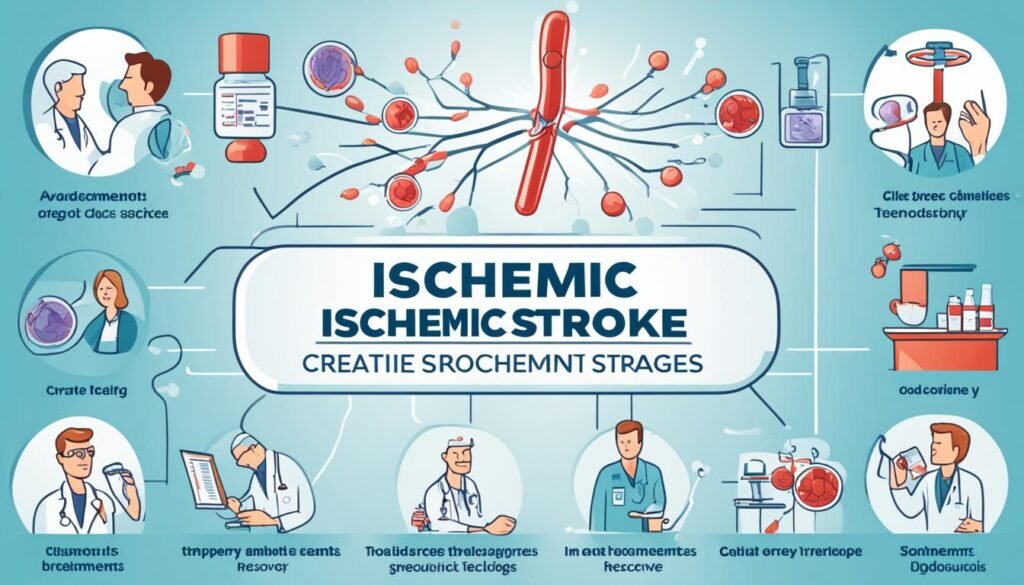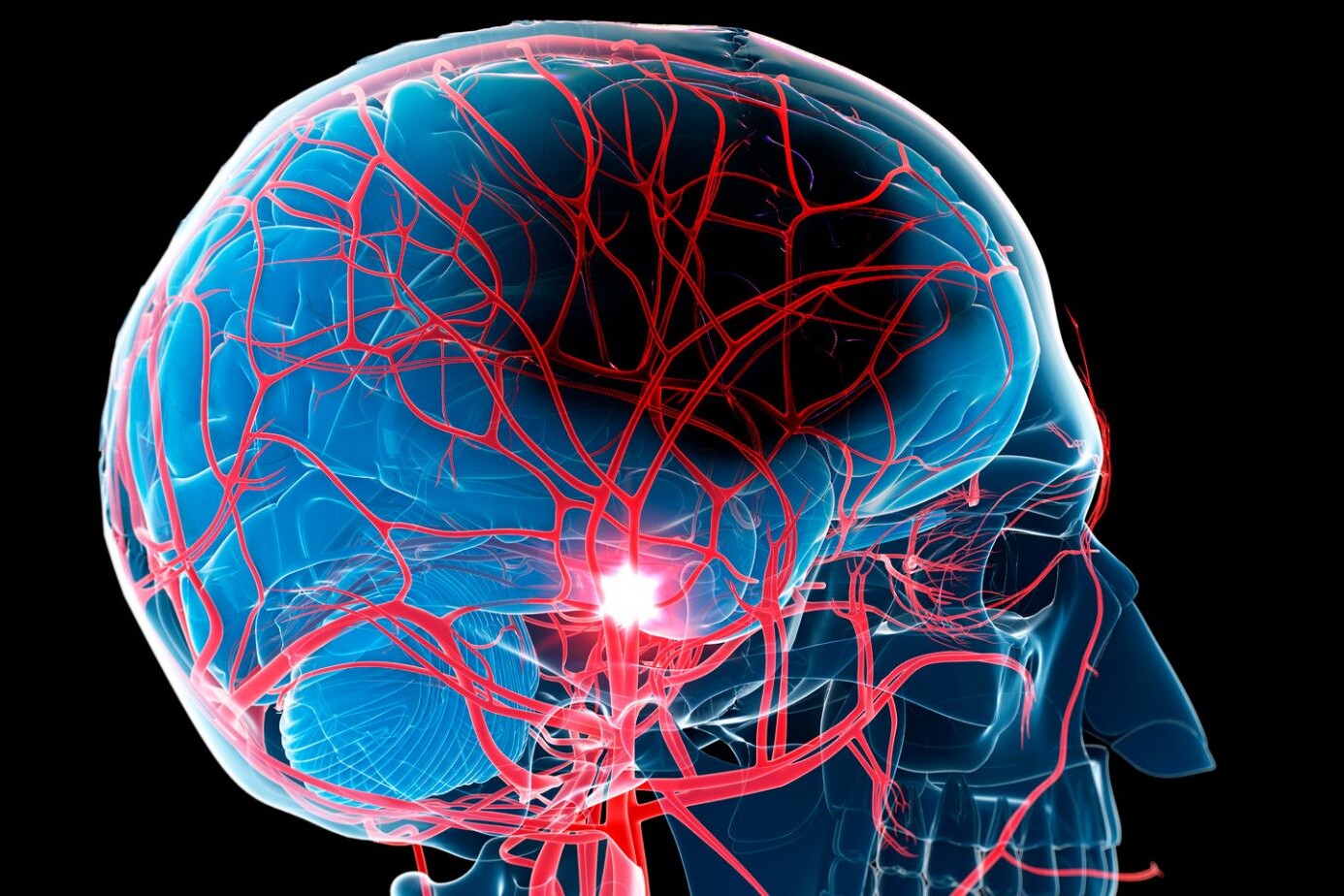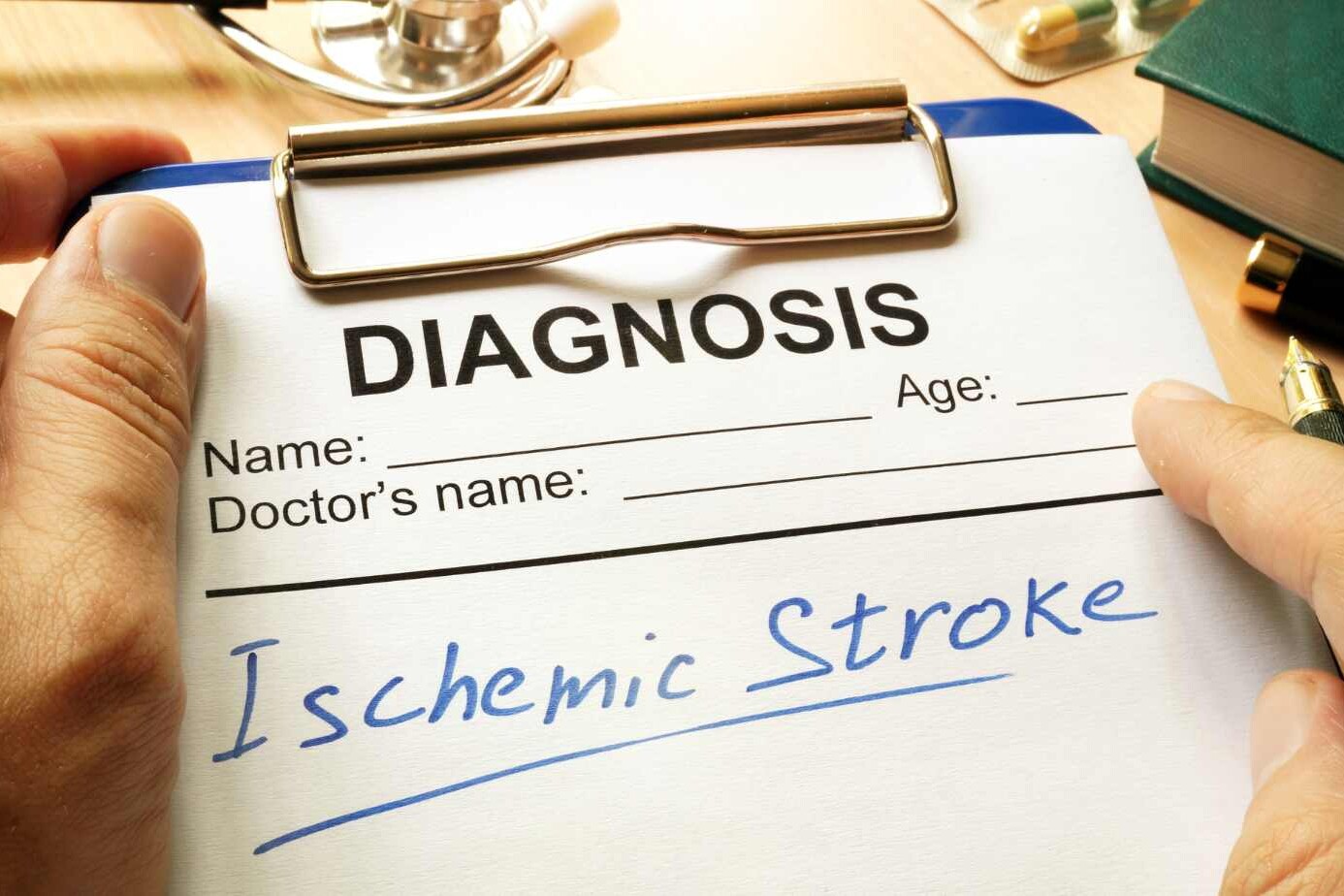Ischemic stroke is a major cause of disability and death globally, comprising most stroke cases. A blood vessel in the brain gets blocked, usually by a clot. This cuts off oxygen and nutrients to brain cells. Quick and effective treatment for ischemic stroke is key to limiting brain damage and improving patient outcomes.
Recent advances in medical research and technology have transformed the approach to managing ischemic stroke. Intravenous thrombolysis and endovascular therapies are now widely available. These evidence-based treatments help healthcare professionals restore blood flow fast. This reduces the severe effects of ischemic stroke.
Understanding the causes of ischemic stroke and the newest ischemic stroke management guidelines is empowering. It allows you to make smart health decisions. It also helps you work closely with your healthcare team. Together, you can aim for the best possible recovery after an ischemic stroke.
Table of Contents
ToggleUnderstanding Ischemic Stroke
An ischemic stroke happens when a blockage in the brain stops blood flow. This is often due to a clot or buildup of plaque. When brain cells don’t get oxygen and nutrients, it can lead to very bad results.
Causes and Risk Factors
A common cause is atherosclerosis. This is when plaque builds up in your arteries. The arteries get narrow and hard. There are two main types of ischemic stroke due to this:
- Cerebral thrombosis happens when a clot blocks a blood vessel in the brain.
- Cerebral embolism is when a clot from somewhere else gets stuck in the brain’s blood vessels.
Symptoms and Diagnosis
The signs of an ischemic stroke can differ. But they can include sudden weakness, numbness, or not being able to move on one side. You might find it hard to talk, see clearly, or walk. A bad headache could also happen.
It’s important to get help fast. The longer the brain goes without oxygen, the worse the damage can be.
Doctors might use CT or MRI scans to see the blockage. They might also check your blood to find out what are causes of ischemic stroke.
Intravenous Thrombolysis (IV tPA)
Intravenous thrombolysis, or IV tPA, is a popular treatment for ischemic stroke. Doctors give a clot-dissolving medicine through a vein. The medicine’s job is to break up the blood clot, allowing blood to flow freely again in the brain.
Eligibility Criteria
Some patients can have IV thrombolysis even with possible risks. If a person has severe trouble speaking, seeing, or moving due to a stroke, they should get this treatment. The doctors weigh the risk of bleeding from the medicine against its benefits to the patient.
It’s also safe for pregnant women facing a moderate or severe stroke. Doctors consider the risk of bleeding in the womb but focus on what helps the most.
Time Window for Administration
Use of IV thrombolysis in the U.S. doubled by 2011, within a 3 to 4.5-hour window. During that time, this treatment was found to help stop a stroke from getting worse. It has even saved lives.
Research on this kind of treatment goes way back. Today, doctors from around the world study how to best help stroke patients.
Benefits and Risks
An ECASS 3 trial showed us we need to treat some by the 4.5-hour mark. A study on using a medicine called alteplase within that time tells us it can work.
The most important thing is treating the stroke early. This helps save brain areas that are at risk. A good health team working together is key to making this happen.
Endovascular Therapy
Endovascular therapy is a great way to treat strokes. It uses special tools to remove or break up blood clots in the brain’s arteries.
Catheter-based Clot Removal
This treatment puts tiny tubes into big blood clots in the brain. Doctors can pull the clot out with these tubes or use medicine to dissolve it.
Stent Retrievers
Using stent-retrievers for endovascular thrombectomy is better than just medicine for some stroke cases. This is if the stroke is caused by a big blood vessel blockage and if treated within six hours.
To get this treatment, you must be 18 or older and have had a stroke. You also need to score at least 6 on a stroke test, get IV treatment within 4.5 hours, and show a large artery blockage on images. The treatment is done up to 24 hours of your start of Ischemic stroke symptoms. It takes about 2 hours, and you will be in the hospital’s intensive care unit for about a week at the least, depending upon recovery of symptoms.
Other options to treat ischemic stroke
Ischemic stroke patients may need extra help to recover. They might get medicines to prevent more blood clots. Surgeries or rehab programs can also play a big role in getting them back on track.
Antiplatelet and Anticoagulant Therapies
Doctors often give patients aspirin or clopidogrel to stop new clots. This lowers the chance of having another stroke. Patients with heart rhythm problems might take anticoagulants, like warfarin, to help as well.
Surgical Interventions
If there’s a big blockage in an artery, surgery might be needed. Procedures, such as carotid endarterectomy or carotid artery stenting, can help blood flow. They aim to prevent future strokes.
Rehabilitation and Recovery
Rehab programs are essential for stroke recovery. They mix physical, occupational, and speech therapies. The goal is to help patients with their movement, thinking, and talking abilities. These programs can make a big difference in the patient’s life.

Preventing Recurrent Strokes
Stopping another stroke is key for those who have already had one. It’s vital to use good strategies. This helps lower the risk of another stroke.
Lifestyle Modifications
To avoid a stroke again, making healthy life choices is important. Here are some changes you can make:
- Stop smoking. This reduces the risk of another stroke.
- Drink less alcohol. Too much is bad for your health.
- Exercise often. It makes your stroke risk lower.
- Eat well. A good diet helps with blood pressure and more.
Medical Management of Risk Factors
Changing your life is not the only way to prevent a stroke. Medicines and treatments can also help. Your doctor might suggest:
- Drugs to prevent blood clots are helpful in reducing stroke risk.
- Getting high blood pressure, diabetes, and high cholesterol in check. This cuts your risk.
- Dealing with sleep apnea. It’s common in stroke survivors and raises the risk of another stroke if not treated.
By working on both your lifestyle and getting medical help, you can lower your chance of a new stroke. This also helps keep you healthy in the long run.
Conclusion
Ischemic stroke is a critical medical emergency needing quick and great treatment. This helps lessen brain harm and makes outcomes better. Today, both intravenous thrombolysis and endovascular therapies offer new hope.
Learning about the causes and risk factors, understanding the symptoms, and getting quick medical help raise your chances of getting the right care on time. Also, preventing future strokes through lifestyle changes and controlling risks is key for your health.
With ongoing research and new treatments, healthcare professionals are always striving to offer the best care. Working together with your medical team helps you through this tough time and increases chances for recovery.
FAQ
What is ischemic stroke?
Ischemic stroke happens when a brain blood vessel gets blocked. This blockage is often caused by a blood clot. It stops brain cells from getting oxygen and nutrients, leading to disability or death. Fast and right treatment helps lower brain damage and gets better results for patients.
What causes ischemic stroke?
A blockage in a brain blood vessel causes ischemic stroke. This blockage is usually from a blood clot or plaque. Common risk factors are:
What is intravenous thrombolysis (IV tPA)?
Intravenous thrombolysis or IV tPA is a key treatment for ischemic stroke. It uses a medicine that breaks down blood clots. This can open up the blocked blood vessel in the brain by dissolving the clot.
What is endovascular therapy?
Endovascular therapy is another good option for treating ischemic stroke. Specialists use tiny tools to directly remove or break up the blood clot in the brain’s arteries. It’s a beneficial treatment method alongside IV thrombolysis.
What other treatments are available for ischemic stroke?
For ischemic stroke, after the main treatments, patients might need other care. This includes various therapies and interventions to help them get better and prevent future strokes.
How can I prevent a recurrent ischemic stroke?
Stopping another stroke is very important for people who’ve had one. This involves managing risk factors and following a doctor’s advice carefully. It’s crucial for stroke prevention.
About The Author

This article is medically reviewed by Dr. Chandril Chugh, Board-Certified Neurologist, providing expert insights and reliable health information.
Dr. Chandril Chugh is a U.S.-trained neurologist with over a decade of experience. Known for his compassionate care, he specializes in treating neurological conditions such as migraines, epilepsy, and Parkinson’s disease. Dr. Chugh is highly regarded for his patient-centered approach and dedication to providing personalized care.
→ Book a consultation to discover which remedies suit your needs best.




